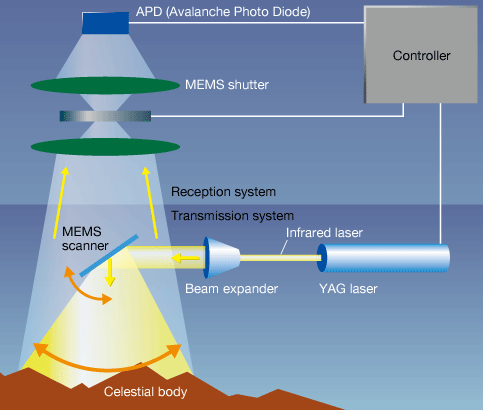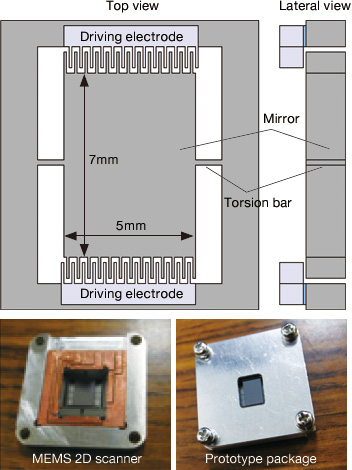TOP > Report & Column > The Forefront of Space Science > 2010 > Micro-Sized Handyman
![]()

Current R&D at JAXA Next, let me introduce JAXAs current R&D activities on MEMS technology. Several groups at JAXA are engaged in R&D on a variety of devices using MEMS including: X-ray detection device; X-ray mirror; infrared filter; oscillator; and actuator. Some are intended for satellite use. Since there is insufficient space in this article to introduce all our R&D, I will showcase here some MEMS-like moving-devices (this phrase may sound strange) that I am working on. MEMS scanner for landing-laser radar Landing-laser radar is used to measure the distance between a spacecraft about to land and the targeted celestial object. A laser is emitted from the spacecraft and the time of its return reflected from the object is measured. The distance is calculated based on the time and light velocity. Most conventional landing-laser radars are a type to measure distance to one point. In the past, even with the addition of a function to scan the object surface, the equipment was too large and unsuitable for a long-distance satellite or explorer like HAYABUSA. If we can produce a small scanner that swings light (i.e., laser) with MEMS, we could create a small landing-laser radar capable of scanning multiple points. Fig. 1 shows a functional diagram of a radar system under development. Since the laser can swing vertically and laterally, we can measure planar distance. Once distance on the surface is determined, we can calculate the plane (2D) plus height (distance).EThus, a three dimensional (3D) image of a celestial body can be profiled. Whereas there was only one measurable point in the past, the new radar can provide 3D images. This added function allows us to use the equipment for other purposes, not just landings. For example, it enables us to analyze the shape of the object. We can also collect a variety of information about the object by analyzing the data combined with strength of radar. 
Fig. 2 shows the structure of the MEMS scanner for the radar, and photos of the scanner fabricated by us. From the standpoint of MEMS, this device is too large but it was fabricated in the same way as a small MEMS device. 
|
||||||||||




